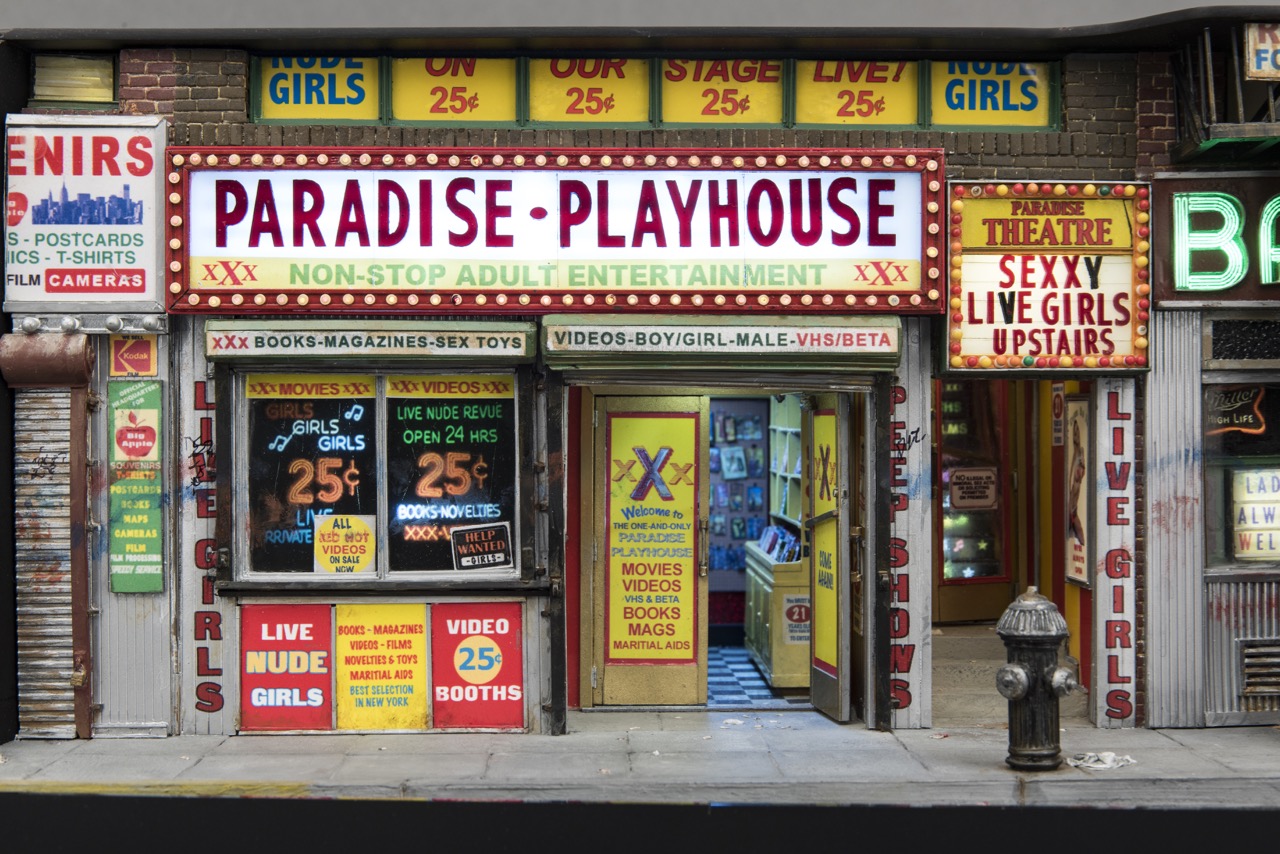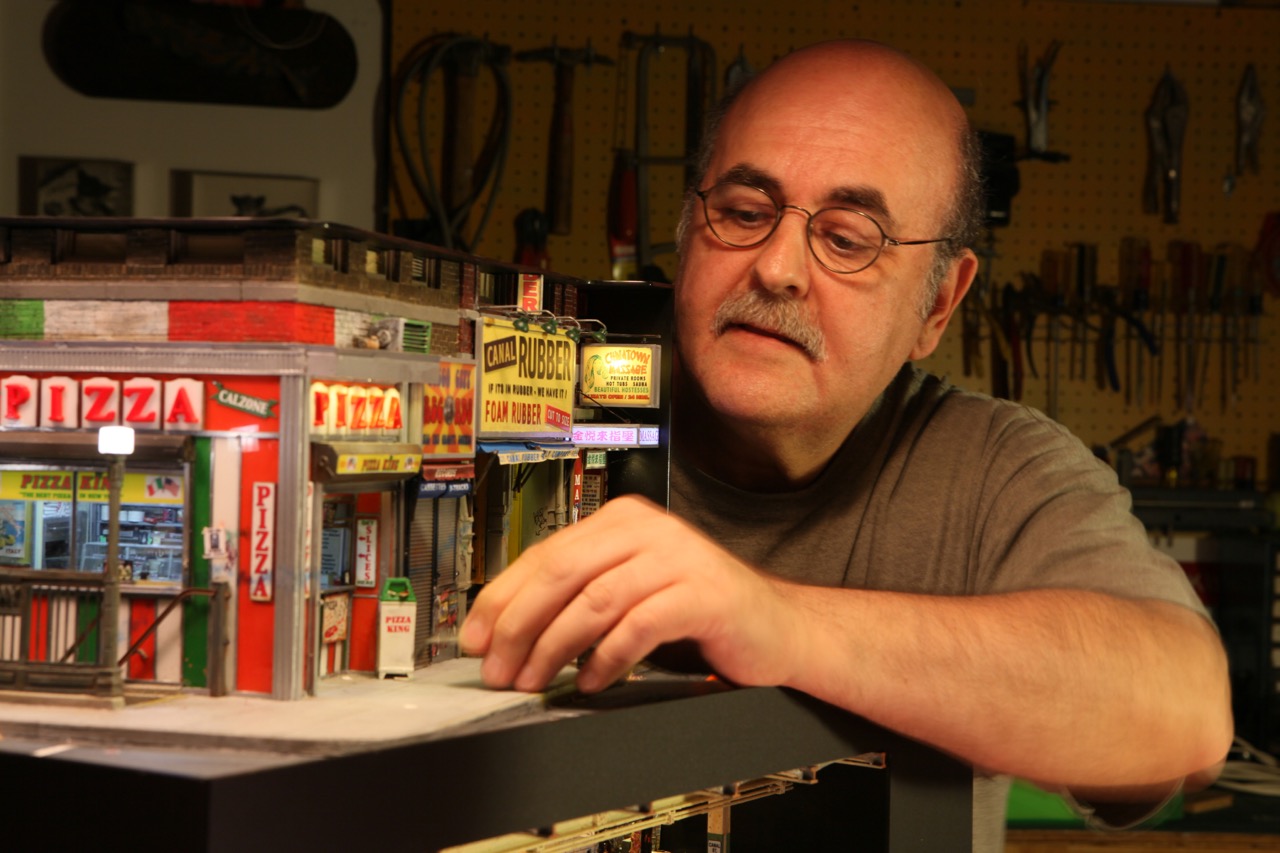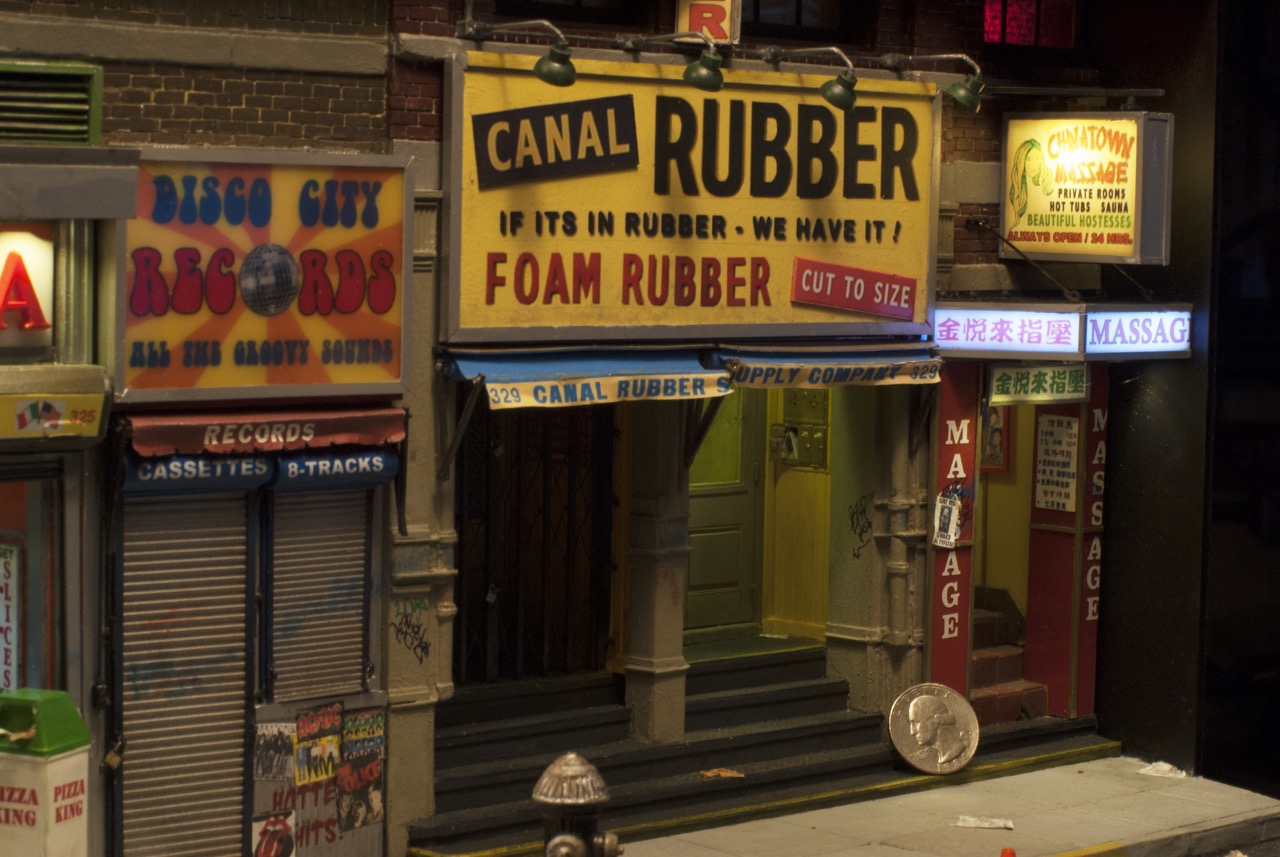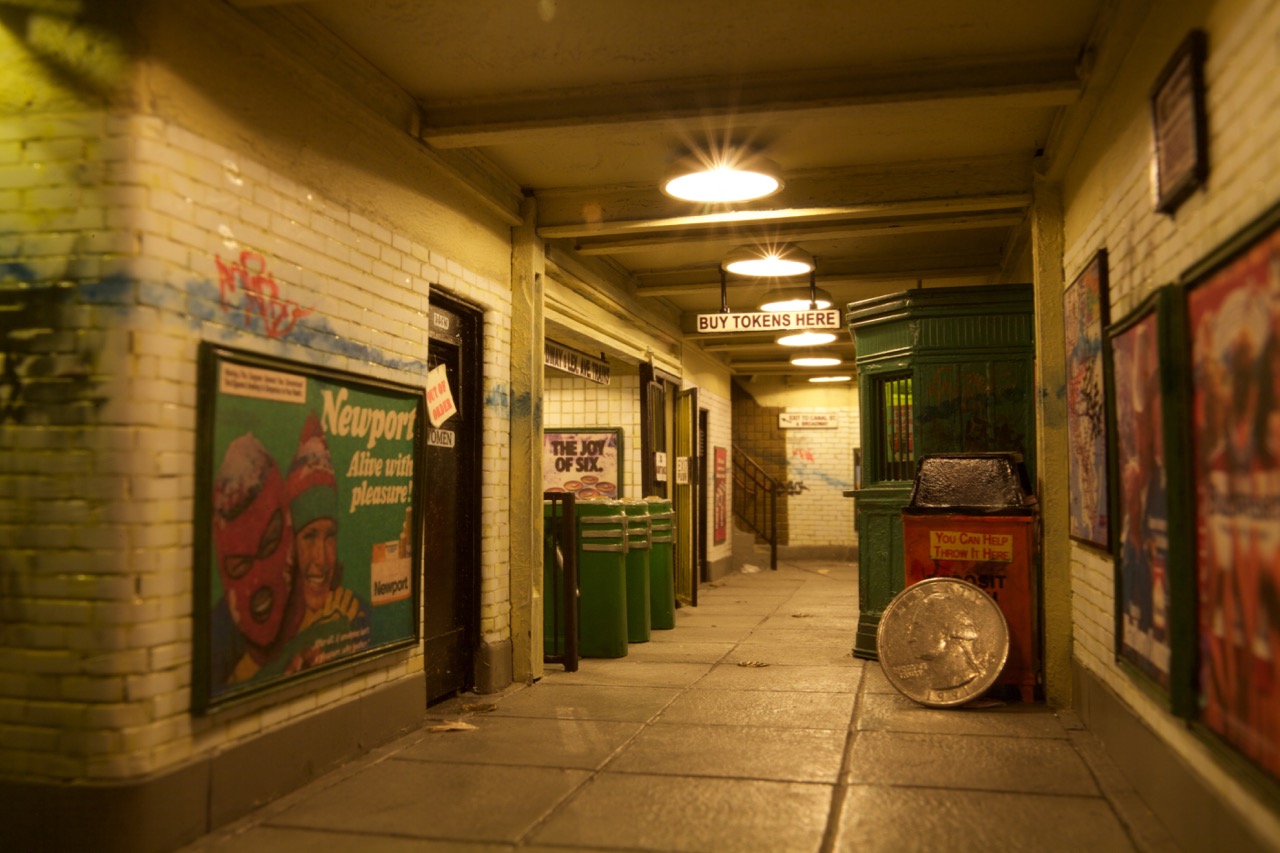½ inch = 1 foot scale
Alan Wolfson // Miniature Urban Sculptures // Hollis Taggart Galleries, Chelsea
Artist Alan Wolfson takes one of the world’s most massive cities, empties it of its people and condenses it down to its grittiest core. His pieces are astonishingly realistic but fictionalized dioramas of a bygone New York whose meaning must be construed by the viewer. Just make sure to look closely or risk missing a tiny clue that unlocks the real story.
“I want the viewer to get involved in what they’re looking into. I want them to come up with a scenario of what happened here: Why is that sandwich on the counter only half-eaten? Is there a tip on the table? What’s with those stomped-out cigarette butts by the subway entrance?
I try to tell a story with these minute details. My work is not about how small everything is but the stories these small things tell. I don’t put in people because three-inch tall people remind you you’re looking at a miniature. I want you to be thinking about the narrative. One-foot in real life is one-half inch in my pieces so the environments are intricate. And, because the scale it so small, it’s intimate.
For many years, hardly any artists were working in miniature and I felt my work wasn’t being taken seriously as an artist. Only painting and sculpting were considered real art. I consider myself to be a sculptor. My work is considered hyperrealism. Now, with more people working in miniature, it’s taken more seriously. For me, it’s always been the way of doing my work.
I grew up in Brooklyn in the 1950s. My father worked as a commercial artist as a letterer and sign painter. In school, we had to build a diorama in a shoebox as for homework. I loved that. I made scenes of what I saw on my walk to school – butcher shop, police station, that kind of thing. That’s essentially what I’m still doing. I just kind of got carried away with it.
I was a pretty rebellious kid. Then Vietnam came and I was one of those hippies that got drafted. I saw so many lives get ruined. To cope, I started thinking about the New York City I grew up in and longed for. It removed me from the reality I was in. I said to myself: ‘When I get out of this situation, I’m going to build a diorama of a subway station.’
I make every element by hand in my pieces. All the lighting, the props and the architecture. I’ll think about the piece for a long time, visualizing, problem-solving. By the time I start, I’ve thought about it for months – years maybe. I make a rough sketch to refresh my memory. I do research and pull photographs. Then I build a cardboard mock-up mainly to figure out sightlines. Then I replace the cardboard pieces with acrylic plastic. Some of these locations never actually existed. I make them up. I also make up 75 percent of the narrative as I go along and build the appropriate things to tell the story.
People ask me why I always do environments with graffiti. It tells part of the story. When I went away in 1968, there was no such thing as graffiti. The first time I saw it when I came back from the service I thought, ‘Well, it’s kind of a mess and I kind of like it.’ I want it known that graffiti was part of the character of New York at that time.
I live in California. When I go back to New York it’s changed so drastically I don’t even feel like I’m in New York. I have fond memories of walking around 42nd Street when I was a teenager. Maybe it wasn’t the nicest place in the world but it was my place and I felt comfortable there.
I had meeting a few years ago with the Times Square Alliance about doing a commission: I said to the guy: ‘I have a question. ‘Why the fuck did you screw up Times Square?’ His eyes got big and his mouth dropped open. He said: ‘We had to clean it up, Mayor Giuliani this and that.’ And I said: ‘You didn’t do it for New Yorkers. It’s a place where tourists buy T-shirts and postcards, like Main Street in Disneyland. You didn’t clean anything up. You moved it on and made it someone else’s problem and found a way to make money off of the place it had been.’
Needless to say, I didn’t get the commission.
New York was more interesting back then. More genuine. People wanted to scribble on the subway so they did. If they wanted to vomit in the subway because they snorted too much heroin, they did. What I do is an accurate representation of New York whether you like it or not.”
-Alan Wolfson




